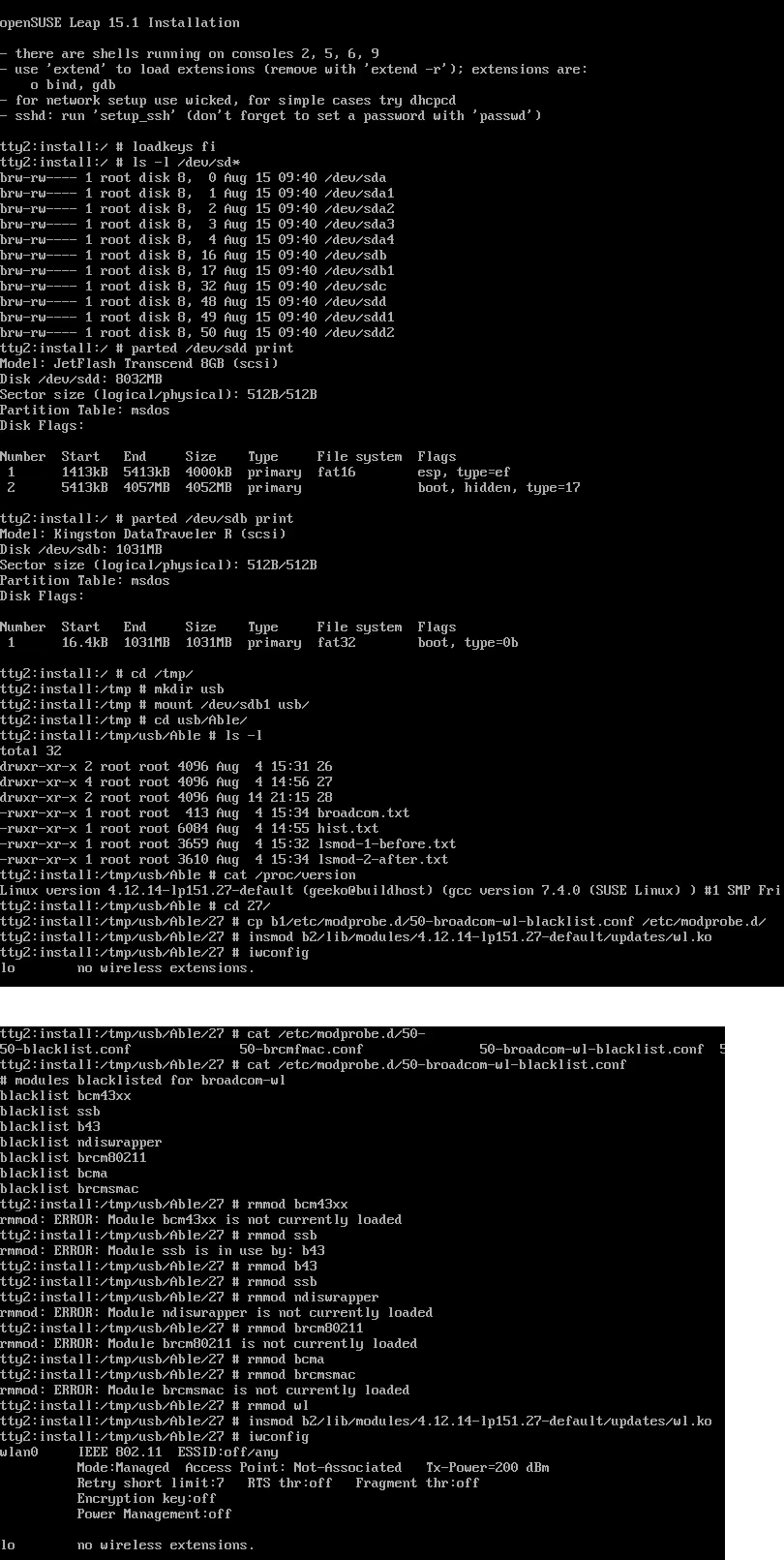

- #Bcm4360 driver linux suse how to#
- #Bcm4360 driver linux suse install#
- #Bcm4360 driver linux suse drivers#
- #Bcm4360 driver linux suse download#
You can then boot your native Kali and take it from there. BCM4360 card compatibility with arch linux - Driver confusion Hi all, I'm pretty new to linux use and was trying to run arch for a hoot however I've not been able to get my BCM4360 card to show up as a wireless connection option in the 'ip a' command.
#Bcm4360 driver linux suse install#
Any changes you make within chroot will occur on the native install of Kali.Įxit the chroot, umount the filesystem, and shutdown the Kali virtual machine. Now, you can do your apt-get to install whatever you need. Within the chroot, you're environment would be as if you're logged in to Kali natively except you'll have a network connection because you're actually running Kali on Virtual Box with an emulated network card.
#Bcm4360 driver linux suse how to#
You can reference the Gentoo Linux install documentation to get an idea of how to set up a chroot.
#Bcm4360 driver linux suse download#
You need to download the Windows driver for BCM4306 from the following link: and place them under /lib/windrivers: mv PATHTODRIVER /lib/windrivers. Setup a chroot environment on the mounted filesystem. Afterwards create a directory with: mkdir /lib/windrivers. To clarify, you're running Kali within Virtual Box, while also having access to the entire root filesystem of Kali installed natively on the Mac.

That will provide filesystem access to the Kali installed in your Mac. You can read more about this process here.īoot Kali within Virtual Box, and mount the second disk. And of course, make sure you select the correct partition. Make sure networking is working from within Kali. Heres an overview of the process: Basically, you can install Kali Linux in Virtual Box. And you have to be very careful or youll cause bigger problems.
#Bcm4360 driver linux suse drivers#
WARNING: DON'T boot from the second disk in Virtual Box. Theoretically, its possible to get a network connection so that you can get the BCM4360 drivers installed. Then add the hard disk partition that Kali is installed on (in the Mac) to the Kali Virtual Box configuration, as a second disk. Here's an overview of the process:īasically, you can install Kali Linux in Virtual Box. And you have to be very careful or you'll cause bigger problems. At this point, recompile your wireless drivers and reboot the system.Theoretically, it's possible to get a network connection so that you can get the BCM4360 drivers installed. Once you are finished, you can do ““rpm -qa | grep kernel” and confirm everything looks good. Rpm -e kernel-devel-3.10.0-327.13.1.el7.x86_64Īlso change to “/lib/modules” and do a directory listing and remove any directory referring to old kernel versions. There is no official package available for openSUSE Leap 15.3. This driver also supports the incorrectly identified BCM4328 chipset which is actually a BCM4321 or BCM4322 chipset. Lets assume that “uname -r” returned “3.10.0-514.2.2.el7.x86_64” then all the 3.10.0-327 ones are old and need to be removed. These packages contain Broadcom's IEEE 802.11a/b/g/n hybrid Linux device driver for use with Broadcom's BCM4311-, BCM4312-, BCM4321-, and BCM4322-based hardware. If you are missing them, the use yum or equivalent on your distribution to install them such as:

In the example above, there are kernel headers and a kernel development package that match the kernel we are running. If you use the RPM package manager then “rpm -qa | grep kernel”. Then use your package manager to determine if you have kernels, kernel headers or kernel development packages that are older. This is caused by module you are loading not being matching the kernel version you are running.įirst, determine which kernel you are running with “uname -r”. Sometimes you will see this in the dmesg output as well. When loading the driver kernel module you get a “unknown symbol” error message for one more field names.


 0 kommentar(er)
0 kommentar(er)
